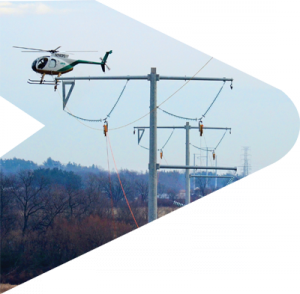Introduction
 Transmission investments solve problems, save money
Transmission investments solve problems, save money
Regional and inter-regional planning achieves results
Since last year’s report, industry stakeholders have made progress within the Midwest Independent Transmission System Operator (MISO) and with neighboring systems to more seamlessly plan transmission solutions that reduce congestion and enable public policy initiatives. Wide-scale planning methodologies that improve reliability while providing economic savings and access to renewable energy resources continue to evolve, and American Transmission Co. continues to play a leadership role.
In a major step forward, MISO approved its first portfolio of regional Multi-Value Projects in December 2011. This portfolio was developed using an 18-month value-based planning process with extensive stakeholder involvement to ensure reliability and regional economic benefits commensurate with costs while supporting energy policy mandates. MISO estimates that the average utility customer in the region will see $23 in benefits from lowered delivered energy costs for about $11 a year in investment – a 109-percent return. Three of these MVP proposals fall within ATC’s service territory.
By easing congestion on the system and providing access to lower-cost sources of generation, transmission investments help keep electric rates in check. When the Midwest wholesale energy market was established in 2005, the average locational marginal price (LMP) within our footprint was more than $10 higher per megawatt hour than the average in neighboring states. In 2011, the LMP was only 10 cents higher. We estimate that of the 13 transmission projects we completed in 2011, 88 percent of the cost will be offset by savings in energy prices over the life of the project.
With reliability needs firmly ensconced as a priority, our planners continue to work with other industry stakeholders to identify and implement solutions for a cost-effective build-out of the regional electricity grid. Smart Grid technologies will increasingly play a role in improving the operator’s ability to control the grid as well as to better integrate renewable resources.
Our planning and asset management departments are implementing a new study-based ratings methodology for overhead conductors to better manage operational risk of conductor damage and clearance problems. When ATC began operations in 2001, the company adopted the ratings methodologies of the founding utility companies. Industry benchmarking and recent best practices indicated a need for a review of those methodologies. Since weather is an important factor in the development of transmission line ratings, we contracted with the Electric Power Research Institute to complete a weather parameters study. The new Study‑Based Ratings Methodology gives increased confidence that our rating modeling more closely represents actual field conditions.
The 2012 Assessment covers the years 2012 to 2021 and indicates a need for $3.9 to $4.8 billion in transmission system improvements. The total includes nearly $2 billion in specific network projects, $1.1 billion in asset maintenance and $0.8 billion in Multi-Value Projects. Other capital categories can include developing projects, unspecified network projects, interconnections and infrastructure relocation.
| 2008 | 2009 | 2010 | 2011 | 2012 | |
|---|---|---|---|---|---|
| Specific Network Projects | $1.3B | $1.0B | $1.0B | $1.0B | $1.9B |
| Regional Multi-Value Projects | $0.0B | $0.0B | $0.7B | $0.7B | $0.8B |
| Asset Maintenance | $0.5B | $0.7B | $0.7B | $1.0B | $1.1B |
| Other Capital Categories | $0.9B | $0.8B | $1.0B | $1.1B/$1.7B | $0.1B/$1.0B |
| Total 10-Year Capital Cost | $2.7B | $2.5B | $3.4B | $3.8B/$4.4B | $3.9B/$4.8B |
The planning zone summaries included in this report detail specific projects identified to improve reliability, access to the market and renewable energy resources.
Paul Jett
Director of Strategic Projects

Ron Snead
Director of System Planning
Mark Davis
Director of Asset Management
